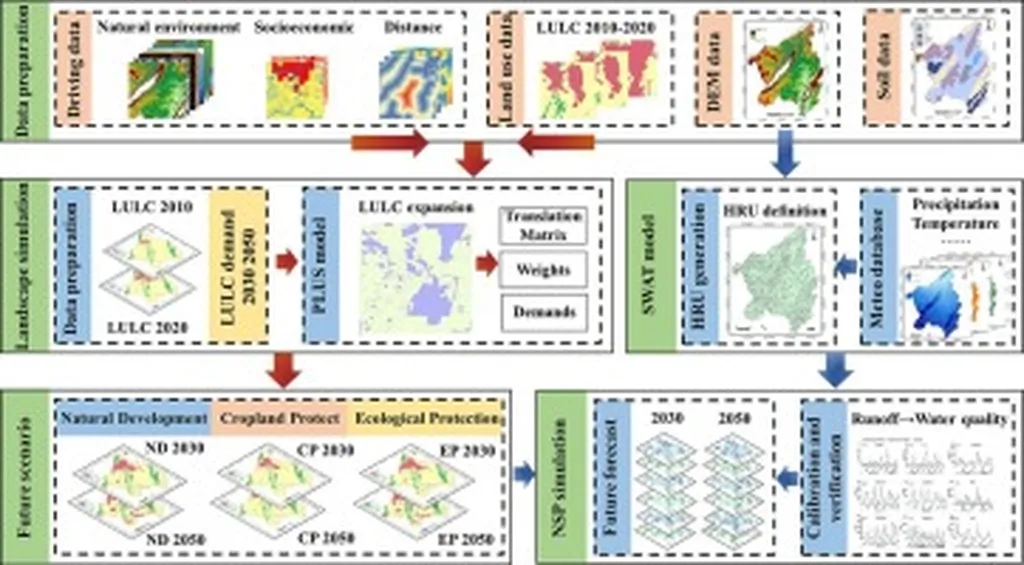In the heart of China’s mountainous and hilly areas (MHAs), a critical challenge has been looming: understanding and mitigating agricultural non-point source (ANPS) pollution. These regions, vital for ecological security and agricultural production, have long been plagued by the complexities of smallholder farming systems, which existing models have struggled to capture accurately. However, a groundbreaking study published in *Agricultural Water Management* is shedding new light on this pressing issue, offering insights that could reshape agricultural management practices and bolster the sector’s sustainability.
The research, led by Lichen Lang from the Institute of Geographic Sciences and Natural Resources Research at the Chinese Academy of Sciences, focuses on the Yuanjiang River Basin, a subtropical, agriculture-intensive watershed. The study addresses both methodological gaps in simulating ANPS pollution and knowledge gaps in understanding its spatiotemporal characteristics. By developing a customized version of the Soil and Water Assessment Tool Plus (SWAT+), dubbed SWAT+ -Smallholder Farming Systems (SWAT+-SFS), the team has managed to simulate the variability within Hydrological Response Units (HRUs) in fertilization timing and dynamic postponement behavior in response to real-time rainfall and soil moisture.
“Existing models often fail to capture the pronounced spatiotemporal heterogeneity of smallholder farming systems,” Lang explains. “Our study highlights the critical need to account for complex human behaviors when understanding contemporary watershed hydrological and water quality processes.”
The research compared three fertilization representation methods: a conventional discrete-event scheme, a spatially split HRU approach, and the proposed SWAT+ -SFS method. While the split-HRU approach disrupted the hydrological unit structure, SWAT+ -SFS struck a balance between computational efficiency and accuracy. The results were striking: the SWAT+ -SFS model reduced overestimation of total nitrogen (TN) during the rainy season and substantially improved total phosphorus (TP) simulation, with average validation Kling–Gupta Efficiency (KGE) values increasing by 67.38 % for TN and 57.03 % for TP across monitoring stations.
The implications for the agriculture sector are profound. By revealing that surface runoff-driven losses are significantly amplified by fragmented, prolonged fertilization schedules, the study underscores the importance of timely, science-based management guidance tailored to smallholder farming systems. This could lead to more efficient use of fertilizers, reduced pollution, and ultimately, higher yields and profitability for farmers.
“Our findings emphasize the need for tailored, science-based management practices that consider the unique challenges of smallholder farming systems,” Lang notes. “This approach not only supports sustainable agriculture but also enhances the resilience of these critical ecosystems.”
As the agriculture sector grapples with the dual challenges of feeding a growing population and protecting the environment, this research offers a promising path forward. By leveraging advanced modeling techniques and a deeper understanding of spatiotemporal heterogeneity, farmers and policymakers can make informed decisions that balance productivity with ecological sustainability.
The study, published in *Agricultural Water Management*, represents a significant step forward in the quest to understand and mitigate ANPS pollution in MHAs. As the agriculture sector continues to evolve, the insights gleaned from this research could shape future developments, ensuring that farming practices are not only productive but also sustainable and environmentally responsible.

